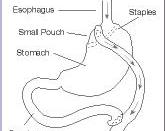Should LAGB be publicly funded?
LAPAROSCOPIC ADJUSTABLE GASTRIC BANDING FOR WEIGHT LOSS IN OBESE ADULTS
Laparoscopic Adjustable Gastric Banding:
University of Birmingham
Principles & Practices of Health Technology Assessment
Oct. 28, 2008
Evidence Based Healthcare and Health Technology Assessment
Objective: This paper discusses whether Laparoscopic Adjustable Gastric Banding for weight loss in obese adults should be publicly funded or not by looking at clinical and cost effectiveness, quality of an HTA by CADTH and applicability to the United States of America. Briefly, LAGB is a surgical procedure in which a band is placed on the upper part of the stomach to reduce its size.
Clinical Effectiveness:
Laparoscopic Adjustable Gastric Banding (LAGB) leads to excess weight loss (CADTH, 2007). However, it does not relatively lead to as much weight loss as Roux-en-Y gastric bypass (RYGB) and Vertical Banded Gastroplasty (VBG). LAGB's advantage over RYGB and VBG is that it is reversible.
Since LAGB is a less invasive type of surgery, it has lesser instant complications and thus shorter hospital stay (CADTH, 2007). LAGB has shown to help reduce comorbidities that are related to obesity (i.e. diabetes, cardiovascular diseases, etc).
To determine effectiveness, percent excess weight loss (%EWL excess weight divided by ideal weight) is looked at. If %EWL>75%, then the result of the surgery is said to be excellent, if %EWL is between 50% and 75%, then the result is said to be good. If %EWL is between 25% and 50%, then the result is fair.
There are two randomized control trials and five non-randomized comparative studies in the clinical effectiveness section. The following three studies are discussed because they contained elaborate results that can be applicable to the US population.
In the outcomes from Blue Cross and Blue Shield Association Technology Evaluation Centre, a single arm series (57 studies) showed...

